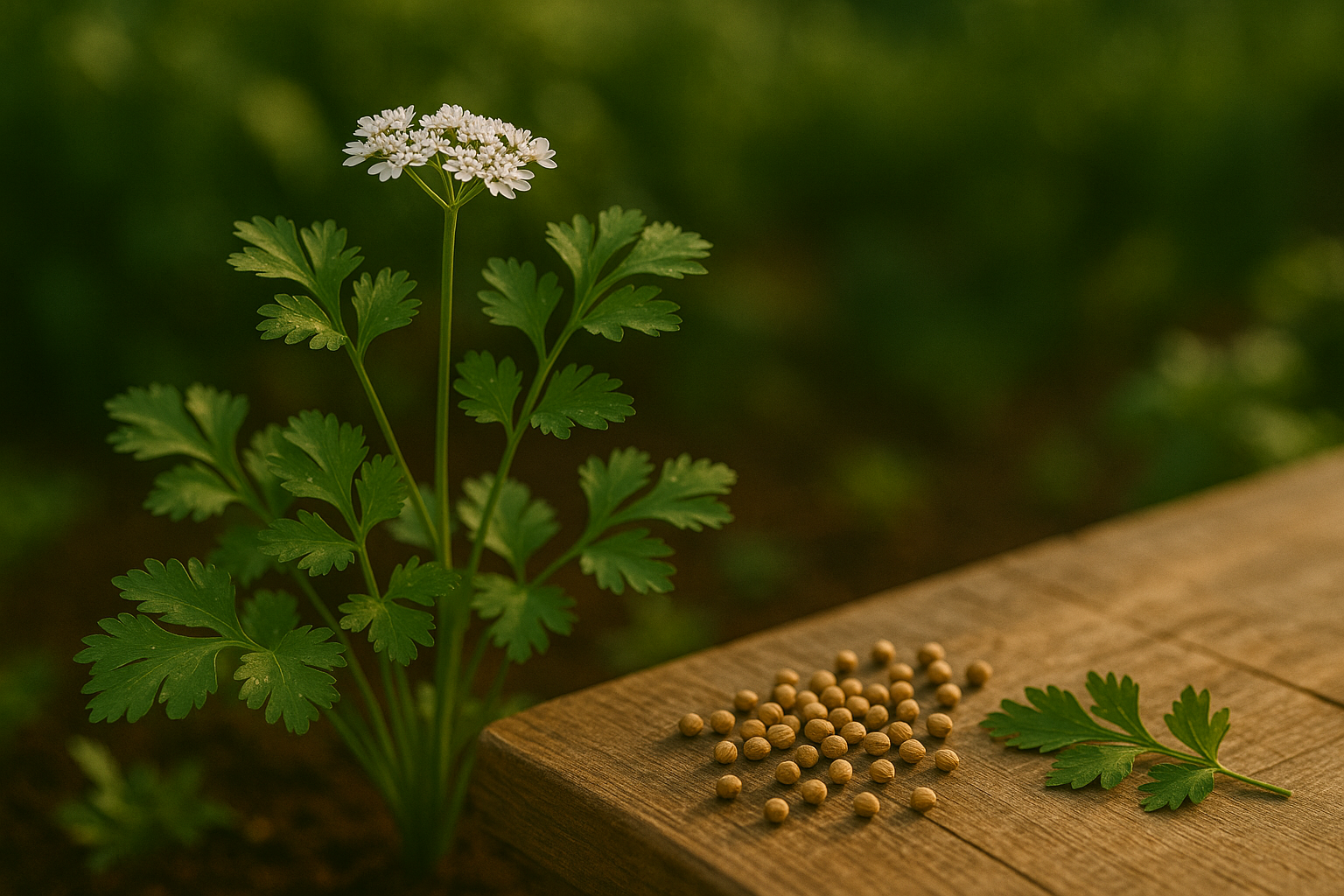Cilantro and Coriander
Cilantro and coriander both come from the same plant, Coriandrum sativum, but the terms refer to different parts depending on where you are in the world. In the United States and Canada, “cilantro” refers to the fresh, green leaves and stems, often used in salsas or as a fresh garnish, while “coriander” means the dried seeds that add a warm, citrusy flavor to curries and spice mixes.
In most other English-speaking countries like the UK, Australia, and India, “coriander” refers to the entire plant—leaves, stems, and seeds—while “cilantro” is rarely used. This naming difference causes a lot of confusion, especially for home cooks following international recipes, shopping for ingredients, or browsing spice aisles.
If a recipe calls for “fresh coriander” and you’re in the US, you’ll want cilantro leaves, not the dried seeds. Conversely, when an American recipe says “coriander,” it almost always means the seeds. Knowing this saves you from accidentally swapping leafy herbs for earthy seeds and vice versa, ensuring your dishes turn out just as intended.
When in doubt, check if your recipe specifies “leaves” or “seeds” and take a quick look at ingredient photos online—small details like these make a big difference in the kitchen and at the grocery store.
Naming Differences Around the World
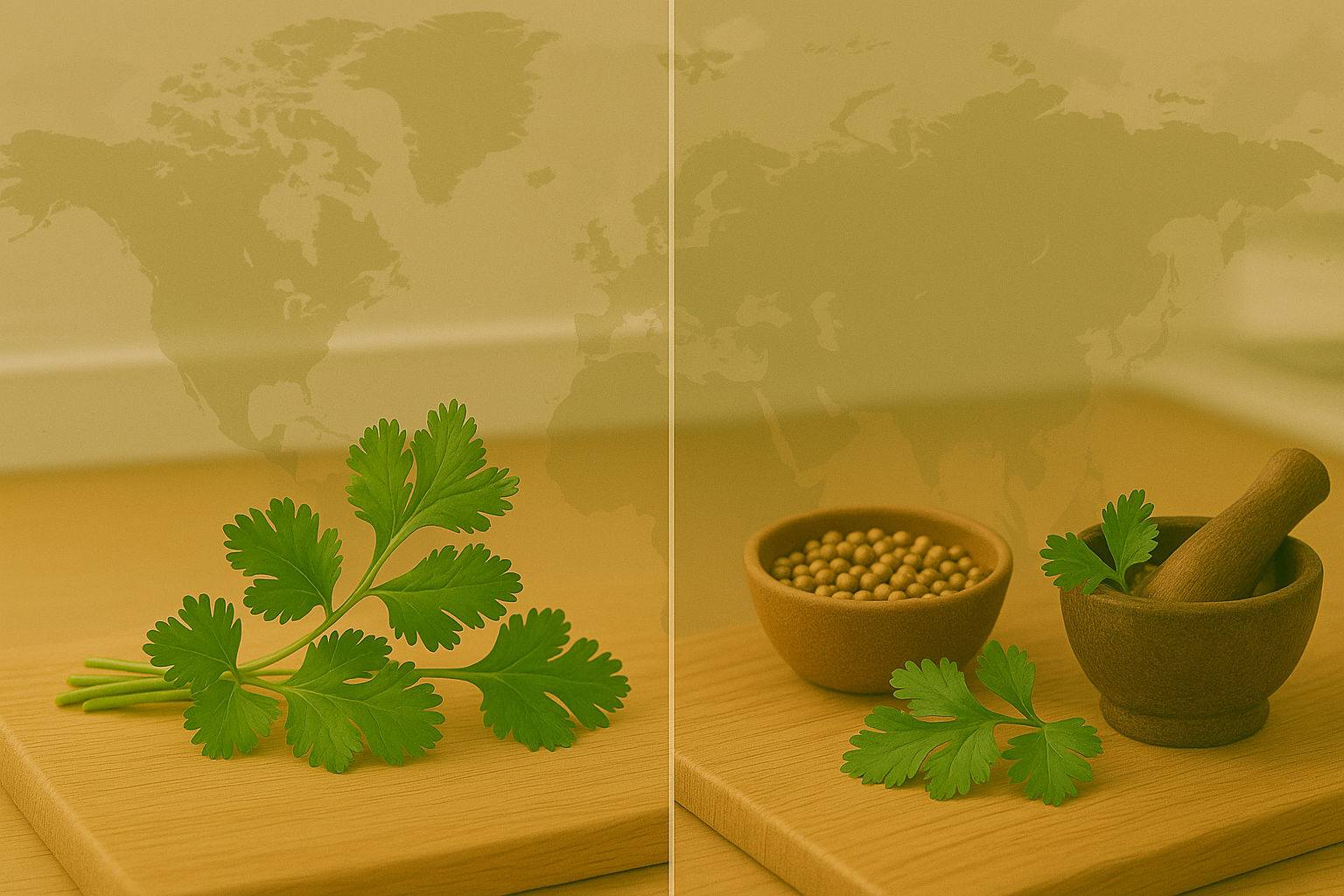
If you’ve ever followed a recipe from another country and found yourself wondering whether to use leafy greens or dried seeds, you’re not alone—herb names like cilantro, coriander, and even Chinese parsley often mean different things around the world.
In the United States, “cilantro” refers specifically to the fresh leaves and stems of the plant (Coriandrum sativum), while “coriander” is used for the seeds. Across the UK and much of Europe, the term “coriander” covers both the leafy greens and the seeds, and “cilantro” is rarely used.
To complicate things further, in parts of Asia and Latin America, “Chinese parsley” might pop up on ingredient lists, which also points to the same leafy herb.
This mix of terms can easily throw off international cooks—if a British recipe calls for “fresh coriander,” American readers should reach for cilantro, not coriander seeds. Similarly, a dish requiring “coriander” in an Indian or Mexican cookbook may demand the leafy version, even though Americans might expect the spice bottle.
When trying new recipes, it’s helpful to check whether the instructions specify leaves or seeds, and if in doubt, a quick search or picture comparison can clear things up before you start chopping or grinding.
Plant Origins and Description
Coriander, scientifically known as Coriandrum sativum, is an aromatic annual herb in the Apiaceae family, which also includes parsley and carrot. It is distinguished by its lacy, bright green leaves and delicate white or pale pink flowers that bloom in umbrella-shaped clusters. The plant typically grows to a modest height of about 50 centimeters.
Coriander offers two distinctly flavored ingredients: the round, beige seeds and the flattened, feathery leaves (known as cilantro). Both are widely used in cuisines around the world. Native to the Mediterranean and southwestern Asia, coriander boasts a rich history spanning over 7,000 years, with evidence of its use found in ancient Egyptian tombs and classical Roman cuisine.
Today, coriander is cultivated in temperate and subtropical regions globally, including India, China, and Central America. Traditionally, its seeds are prized for their warm, citrusy flavor, commonly used in spice blends, curries, and pickles, while the fresh leaves add a zesty touch to salsas, salads, and chutneys.
Growers prefer well-drained soil, full sun, and moderate watering, making coriander a popular herb for both home gardens and commercial farms. Its unique ability to provide both herb and spice makes it a versatile staple in kitchens and an intriguing subject for anyone interested in botany or food history.
Flavor Profiles
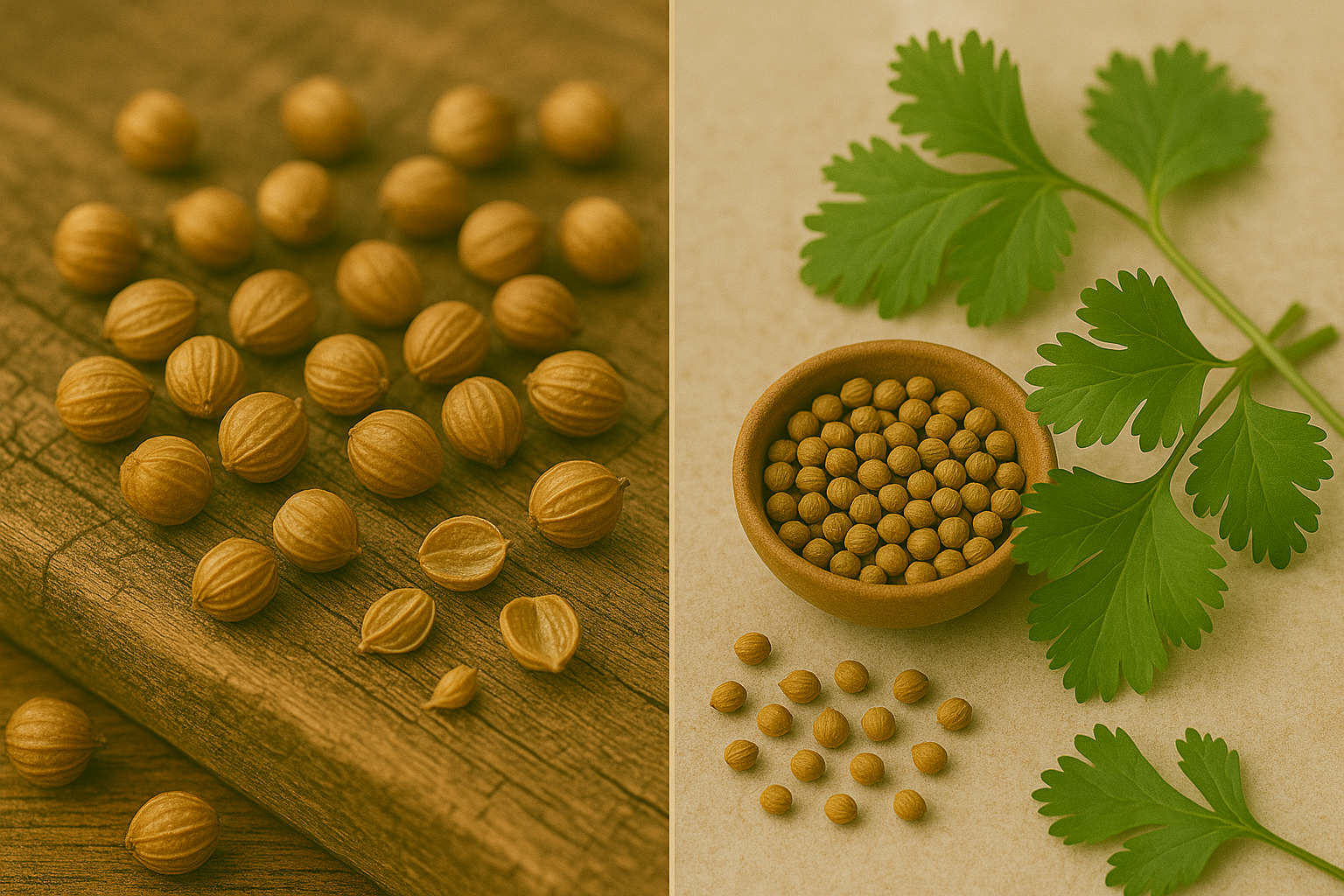
Cilantro leaves are famous for their fresh, bright flavor, often described as citrusy with a hint of pepper. For many, its taste brings a lively, herbaceous lift to salsa, curries, and salads; however, a notable portion of people perceive cilantro as soapy or pungent. This “soap” reaction isn’t just picky taste buds—it’s tied to genetics. Specifically, a variation in the OR6A2 gene makes certain individuals highly sensitive to aldehydes, chemicals found both in cilantro and in some soaps, which explains the off-putting flavor.
This can lead to mixed experiences in households or at dinner parties, with some loving a garnish of fresh cilantro and others picking it off their tacos.
On the other hand, coriander seeds, which come from the same plant, have an entirely different taste. Toasted or ground, coriander seeds taste warm, nutty, slightly spicy, and reminiscent of citrus—think orange peel with hints of pepper and warmth. Their complex flavor is less divisive and appears in breads, pickling blends, and spice rubs worldwide.
If you’re in a multi-preference kitchen, consider using ground coriander for a gentle citrusy note that won’t spark debate, while keeping fresh cilantro as an optional topping.
How to Use Cilantro and Coriander in Cooking
Cilantro leaves and coriander seeds each bring unique flavors to the kitchen, and knowing how to use them can take your dishes to the next level. Cilantro leaves are famously bright and citrusy, perfect for garnishing tacos, curries, salsas, and Vietnamese pho, or blending into sauces like chimichurri and Indian chutneys.
The seeds, meanwhile, have a warm, toasty, slightly sweet flavor, making them ideal in spice mixes like garam masala, pickling blends, marinades, and North African stews.
If you need to substitute, note that cilantro leaves and coriander seeds don’t mimic each other’s flavor—using cilantro for seeds (or vice versa) is not recommended, especially in recipes where spice or freshness is the highlight. However, if you’re out of coriander seeds, try ground cumin as a backup in savory dishes; if you need cilantro, parsley with a squeeze of lime works in a pinch for garnishes, though the fragrance will differ.
For the best flavor, use cilantro leaves as late as possible to preserve their delicate aroma—never cook them for long. Store both leaves and whole seeds in airtight containers, and toast coriander seeds before grinding to intensify their nutty notes.
Pair cilantro leaves with lime, tomatoes, chiles, or avocados, and coriander seeds with cumin, cinnamon, or citrus for balanced, globally inspired dishes.
Storing and Preserving Cilantro and Coriander
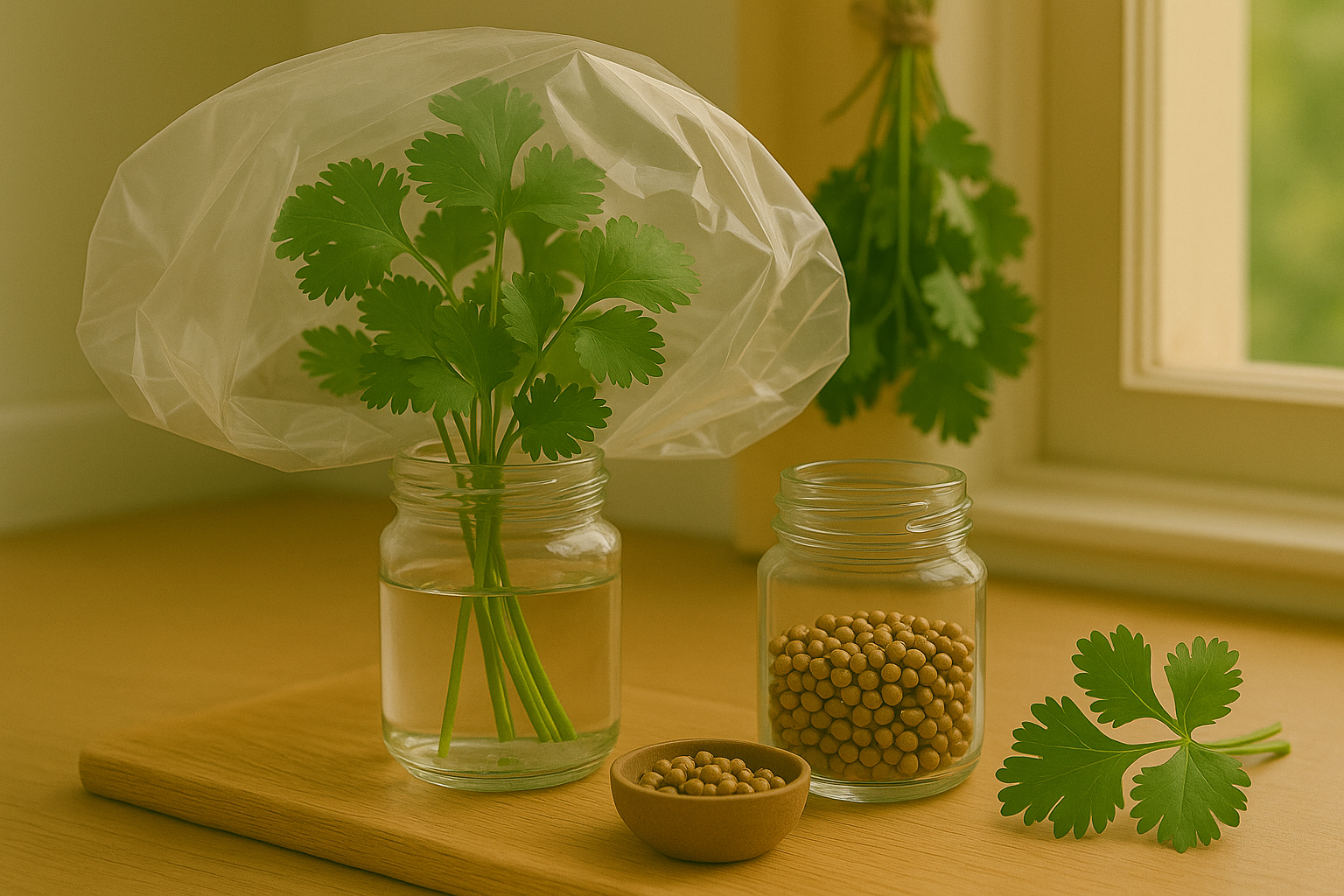
To keep cilantro fresh, start by trimming the stem ends and placing the bunch upright in a jar with about an inch of water, just like a bouquet. Loosely cover the leaves with a plastic bag and store them in the fridge—this way, cilantro can stay vibrant for up to two weeks.
If you want to store cilantro longer, freezing is a great option. Wash and dry the leaves, chop them if desired, then freeze them in ice cube trays covered with a little water or olive oil. You can use these cubes straight from the freezer in soups, curries, or salsas.
Drying cilantro is another method: either hang small bunches upside down in a warm, dry area out of direct sunlight or use a dehydrator. Keep in mind that dried cilantro loses much of its potent flavor.
For dried coriander seeds, store them in an airtight container in a cool, dark cupboard, where they generally retain their flavor for up to a year. Grind seeds only as needed to preserve their fragrance.
Cilantro leaves have passed their prime when they turn yellow, become mushy, or develop a slimy texture. Coriander seeds are stale when they lose their distinct citrusy aroma or taste dusty. Always check for any mold and discard herbs and seeds at the first sign.
Health Benefits and Precautions
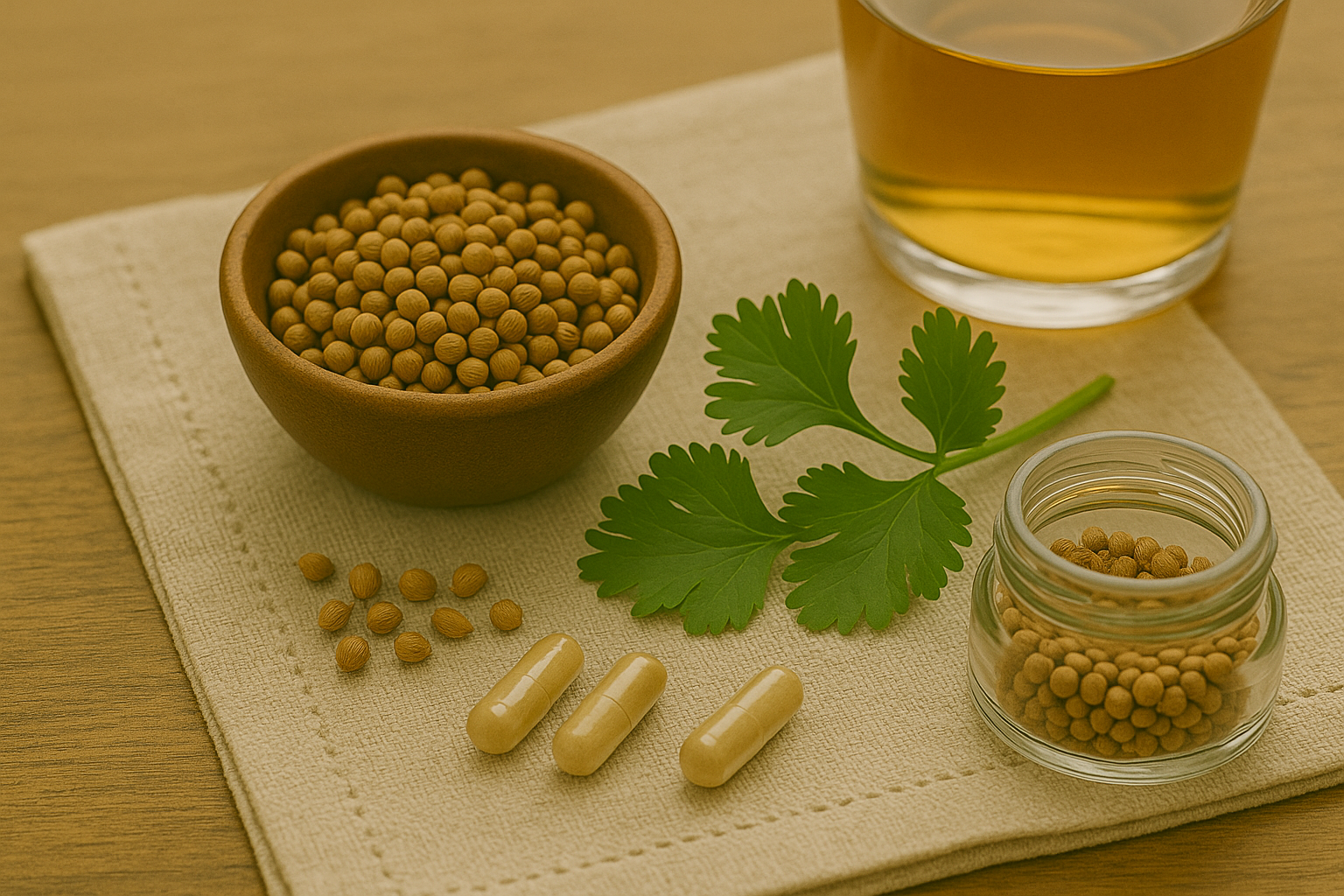
Cilantro leaves and coriander seeds offer impressive health benefits, making them popular choices in kitchens and traditional medicine cabinets worldwide. Cilantro is a rich source of vitamin K, vitamin C, and vitamin A, all of which support immune function and skin health.
Both cilantro leaves and coriander seeds contain powerful antioxidants that protect cells from damage and reduce inflammation. Coriander seeds, in particular, provide fiber and essential minerals like iron, magnesium, and manganese, which support heart health and digestion.
In traditional medicine, cilantro has been used for centuries to help detoxify the body and aid digestion, while coriander seeds are prized for their carminative properties, easing bloating and discomfort after meals.
However, some people may experience allergic reactions to cilantro or coriander, with symptoms like itching, swelling, or, in rare cases, severe reactions. It’s also worth noting that cilantro can taste soapy to some people because of a genetic trait. If you’re new to these herbs, start with a small amount to check for any sensitivities.
Incorporating cilantro and coriander into your diet—whether sprinkled over salads, blended in chutneys, or simmered in curries—can enhance both your meals’ flavor and nutritional value, as long as you stay mindful of possible allergies.
